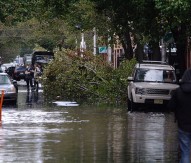
Trigger found for rainforest tree death
Scientists have for the first time identified the ecological trigger that brings about the death of tropical rainforest trees during prolonged water shortages.
Findings from the world’s longest-running drought study in tropical rainforest, co-led by scientists at the UK’s University of Edinburgh and part-funded by the EU, show that it is breakages in the trees’ water transport system that leads to their death, rather than starvation. Over a 13-year period, researchers carried out fieldwork to assess the impact of drought on trees in the Amazon.
Scientists say the reduced rainfall forecast in coming decades could cause the breakdown of the transport system in trees that takes water up from soil to the leaves, which is likely to add significantly to the amount of carbon dioxide in the atmosphere through decomposition of the dead trees. It could also mean rainforests in the future are populated by smaller trees, which store less carbon, the team says.
The study shows that during severe drought, air bubbles can enter the sap of trees and break columns of water inside the tissues that transport water and nutrients, known as xylem. Experts say the tallest trees are most vulnerable to this process, which can then lead to death, though smaller trees are more likely to survive. The results suggest that the Amazon rainforest is not resistant to intense droughts, nor to long term drought.
The work was co-led with the Federal University of Pará, Brazil, and was carried out in collaboration with the Australian National University, the Universities of Leeds and Oxford in the UK, and research centres in Spain and Brazil. The study published in the journal Nature.




